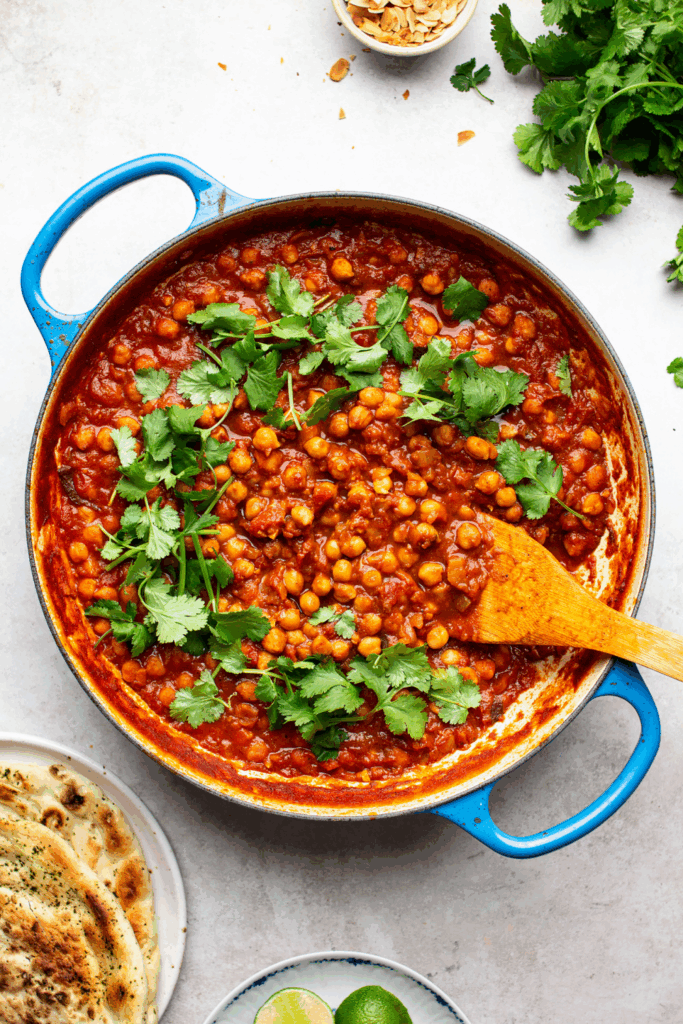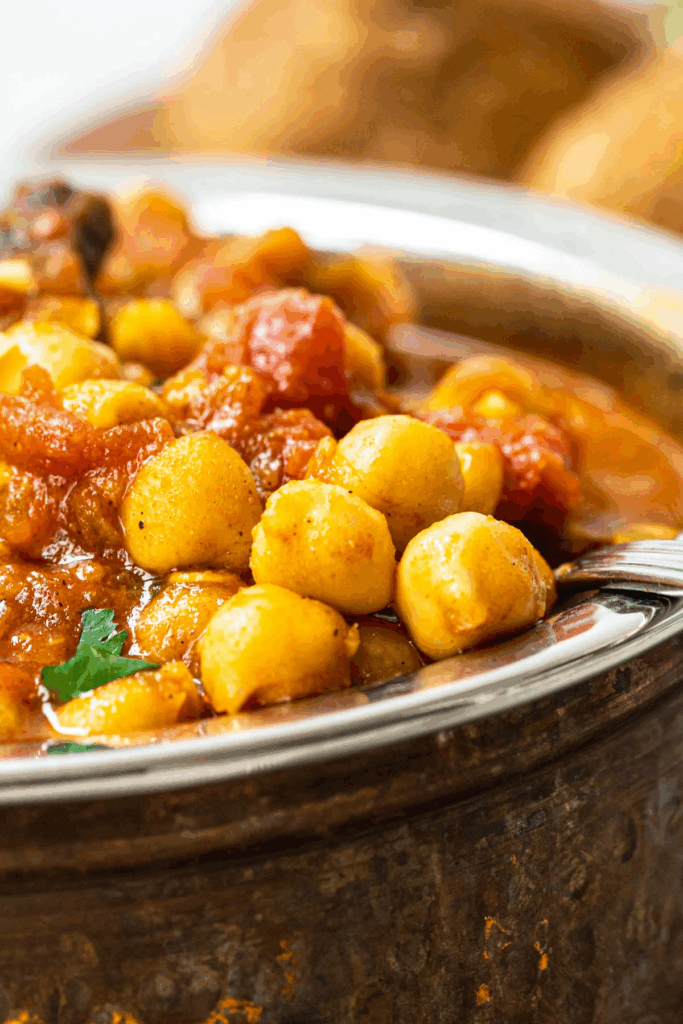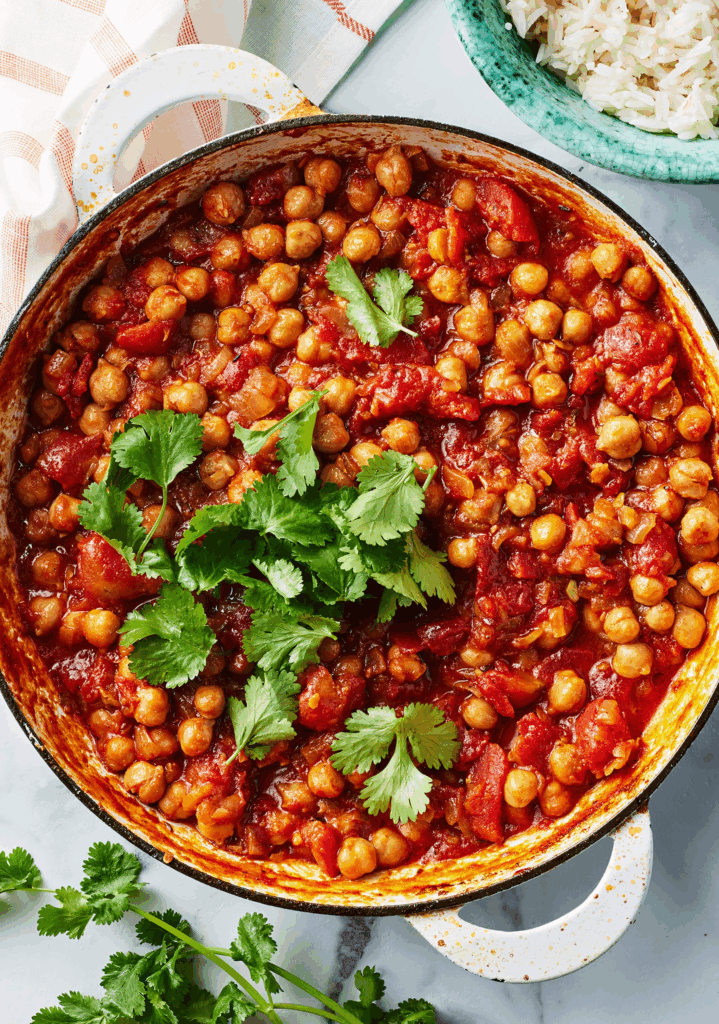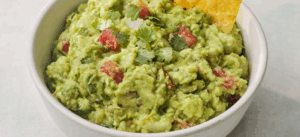Easy Chana Masala Recipe with Canned Chickpeas: Flavor-First Approach

This guide is built for flavor and flexibility. Whether you’re a college student, a busy home cook, or just someone craving bold Indian comfort food without the long prep time, I’ll show you how to get there — stovetop, oven, slow cooker, or even microwave. I’ll walk you through spices, variations, pairings, and all the ways you can adapt this humble dish into something amazing.
- What Is Chana Masala, Really?
- Why I Use Canned Chickpeas — And How to Make Them Taste Like Fresh
- Cooking Methods Compared
- Building the Masala Base: The Foundation of Everything
- Flavor Variations: Spinning Chana Masala Your Way
- Weeknight Cooking Planner
- From Street Food to Fine Dining: How to Serve Chana Masala
- Best Sides and Breads to Pair With Chana Masala
- How to Use Leftover Chana Masala
- Common Mistakes I See (And Have Made)
- Ingredient Substitutions and Spice Alternatives
- Dietary Adaptations: Vegan, Gluten-Free, and Low-Oil Options
- FAQ – Your Chana Masala Questions Answered

What Is Chana Masala, Really?
Chana Masala is more than “spiced chickpeas.” It’s a hearty, richly seasoned North Indian dish where chickpeas simmer in a tomato-onion base infused with spices like cumin, coriander, garam masala, and amchur (dry mango powder). The name comes from “chana,” meaning chickpeas, and “masala,” the spice mixture that defines the flavor.
I’ve cooked it in temple kitchens, luxury hotel buffets, and modern bistros — and what makes it memorable is the balance. Tangy but earthy, spicy but not fiery, saucy enough to coat rice but bold enough to stand alone with naan. It’s protein-packed, naturally vegetarian, and absolutely satisfying.
And by the way, this is one of the best dishes to serve alongside something like What is Paneer Tikka and how to grill it – a great combination of mild acidity and smoky notes.
Why I Use Canned Chickpeas — And How to Make Them Taste Like Fresh
I’ve spent years soaking, boiling, pressure-cooking dried chickpeas. It’s wonderful when you have time. But let me be honest: canned chickpeas have saved me more times than I can count, especially when cooking for family or mid-week pop-ups.
The key is to treat them right. I always drain and rinse thoroughly — then simmer them briefly in salted water with a pinch of turmeric before adding to the masala. This rehydrates them slightly and gets rid of that canned edge.
Some chefs mash a portion of the chickpeas once they’re in the sauce — I sometimes do this too. It thickens the texture naturally and gives a nice variation from whole beans.
For anyone who doubts the flavor, try this: cook your chana with fresh-ground spices, caramelized onions, and a touch of amchur or lemon juice. That tangy, savory, slow-cooked taste? It’s absolutely possible with canned.

Cooking Methods Compared
| Method | Prep Time | Cook Time | Total Time | Flavor Depth | Best For |
| Stovetop (classic) | 10 mins | 30 mins | 40 mins | Rich and bold | Best texture and full flavor |
| Slow Cooker | 15 mins | 4–6 hrs | 6+ hrs | Deep, mellow spices | Batch cooking, set-and-forget |
| Instant Pot | 10 mins | 20 mins | 30 mins | Intense, thick sauce | Fast and fuss-free with dried or canned |
| Oven Bake (covered) | 10 mins | 45 mins | 55 mins | Roasty, smooth base | Great for hands-off comfort cooking |
| Microwave (fast) | 5 mins | 8–10 mins | 15 mins | Light, quick fix | Lunches, student kitchens |
From experience, I use the stovetop when I want that nostalgic, home-style chana. But on busy weekends, my slow cooker version simmers in the background while I prep biryani or desserts — and yes, it pairs beautifully with How to make Indian Biryani step by step.
Building the Masala Base: The Foundation of Everything
This is where 80% of the dish’s success lies. The masala isn’t just a sauce — it’s the stage on which everything else performs. I always begin with oil or ghee, then add whole cumin seeds and wait until they crackle. Then in go finely chopped onions — and I let them cook slowly, until they’re deep golden and almost jammy.
Next comes the garlic and ginger — fresh, not paste from a jar. I sauté them just enough to mellow the raw bite. Then I stir in the dry spices: coriander, cumin, turmeric, paprika or Kashmiri chili for color, and sometimes a pinch of cinnamon or clove if I’m feeling fancy.
Tomatoes come last — either fresh chopped or canned crushed, depending on the season. I let the mixture simmer until the oil separates and the masala turns deep, fragrant, and thick. Only then do the chickpeas go in.
In this regard, Chana Masala shares a similar philosophy with Authentic Chicken Tikka Masala recipe for beginners– it’s all about the sauce, not just the main ingredient.

Flavor Variations: Spinning Chana Masala Your Way
One thing I love about Chana Masala? It’s endlessly adaptable. Over the years, I’ve made dozens of versions — from spicy street-style to subtle, coconut-infused ones for clients who wanted a gentler profile.
When I want depth and warmth, I use a mix of garam masala and ground fennel, with a pinch of clove. For a brighter, tangier chana, I boost the amchur or finish with lemon juice and chopped cilantro.
Sometimes I go South Indian-style, adding curry leaves, mustard seeds, and a splash of coconut milk at the end — it softens the heat and makes the dish incredibly rich.
When I need comfort food fast, I skip the tomatoes and make a dry-style masala with caramelized onions, ginger-garlic, and just enough water to coat. It’s perfect as a filling for wraps, toast, or dosa.
Want to impress at dinner? Add a swirl of kasuri methi and a pat of ghee just before serving. It lifts the whole dish, even if you’ve used canned chickpeas.
Weeknight Cooking Planner
| Day | Prep Focus | Cooking Method | Serving Idea |
| Monday | Make spice mix | Microwave | Serve with warm naan or toasted bread |
| Tuesday | Caramelize onions | Stovetop | Plate with basmati rice and cucumber salad |
| Wednesday | Slow cook for dinner | Slow Cooker | Pair with roti and mint chutney |
| Thursday | Try coconut variation | Stovetop | Serve with lemon rice or quinoa |
| Friday | Add green peas or tofu | Oven Bake | Dish out with a fried egg on top |
| Saturday | Batch cook and freeze | Instant Pot | Make wraps with pickled onions |
| Sunday | Leftover remix | Pan sauté | Use in tikka masala grilled sandwiches |
This kind of rotation keeps my week fresh and stress-free. The base stays the same, but the results feel different every time.
From Street Food to Fine Dining: How to Serve Chana Masala
In India, Chana Masala is comfort food — but that doesn’t mean it can’t be dressed up. I’ve served it from paper bowls at outdoor events and in porcelain at high-end tasting menus. It all comes down to the plating.
At home, I like to serve it in shallow bowls, topped with thinly sliced raw onion, fresh coriander, and a drizzle of lemon juice. If I’m doing it street-style, I’ll add puffed rice, chopped tomatoes, green chilies, and crushed papdi for crunch — like a cross between chaat and stew.
In a more refined setting, I’ll spoon it into small cast iron pots, top with a swirl of yogurt or coconut cream, and serve with tiny garlic naan triangles. Paired with a light salad or chutney, it becomes a full vegetarian plate.
And yes, I’ve even paired it with crisp roasted potatoes and grilled paneer — like a build-your-own Indian protein bowl. Speaking of which, don’t skip my What is Paneer Tikka and how to grill it guide if you want to create the ultimate combo plate.

Best Sides and Breads to Pair With Chana Masala
You can serve Chana Masala with just about anything starchy — but the right pairing enhances the texture and flavor in every bite.
My go-to is jeera rice. The fragrant cumin complements the earthy chickpeas beautifully. When I want something lighter, I serve it with basmati rice and a wedge of lime on the side.
For a richer plate, nothing beats butter naan or garlic roti — warm, chewy, and perfect for scooping up the masala. I brush them with ghee or a touch of chili oil just before serving.
I’ve also paired it with lemon couscous, steamed millet, or even crusty sourdough toast when doing Indo-fusion pop-ups.
For a street-style combo, try chana with bhature — puffy, deep-fried bread — and you’ve got what’s arguably India’s most beloved comfort meal.
How to Use Leftover Chana Masala
Leftovers, to me, are creative gold. Chana Masala is one of those dishes that gets better overnight — the spices deepen, the sauce thickens, and the flavors mellow in the best way.
One of my go-tos is turning leftovers into stuffed parathas. I mash the chickpeas lightly, mix in chopped onions and herbs, and stuff the mixture into dough. Pan-fried with ghee, it makes for a rich, filling breakfast.
I’ve also made chana toasties — toasted sandwiches with a spicy mashed chickpea filling and cheese. It’s fusion comfort food, and always a hit at pop-ups.
For something lighter, I spoon cold chana over salads or grain bowls — quinoa, couscous, or farro. A dollop of yogurt and a squeeze of lemon pull it all together.
And yes, I freeze portions in small containers. Just add a splash of water when reheating to bring it back to life.
Common Mistakes I See (And Have Made)
Like most classic dishes, Chana Masala rewards care and patience. But early on, I definitely made my share of rookie mistakes.
The biggest? Undercooking the onions. Raw or lightly sautéed onions won’t give you that deep, restaurant-style base. You need to caramelize them slowly, until golden brown.
Another common misstep: adding all spices at once without blooming them. I always sauté dry spices in oil after onions and before adding tomatoes. It wakes them up and eliminates the “raw” spice taste.
I also warn against using too much water. The dish should be saucy, not soupy. Let the tomatoes reduce properly and adjust moisture slowly.
Lastly, don’t skip the acidity. Whether it’s amchur, lemon juice, or tamarind — that touch of tang is what makes chana sing. Without it, it can taste flat or overly heavy.
Ingredient Substitutions and Spice Alternatives
One of the best things about chana masala? It’s forgiving. Over the years, I’ve adapted it to every spice shelf, diet need, and grocery shortage imaginable.
No amchur? I use a splash of lemon juice or a teaspoon of tamarind paste. No fresh tomatoes? Canned crushed or even tomato purée works — just adjust the liquid.
If you don’t have garam masala, try a mix of ground cumin, coriander, a pinch of clove, and cinnamon. It won’t be exact, but it’ll be warm and balanced.
Need it milder? Skip chili powder and use sweet paprika or Kashmiri chili. Want it spicier? Add chopped green chilies or chili flakes while blooming the spices.
Out of chickpeas? I’ve even done it with white beans, lentils, and black-eyed peas. Not traditional — but still delicious.
Dietary Adaptations: Vegan, Gluten-Free, and Low-Oil Options
Chana Masala is naturally vegan and gluten-free, which makes it a dream dish for dietary flexibility. But I’ve also adapted it further depending on who’s at my table.
For oil-free versions, I start the onions with a splash of water or low-sodium vegetable broth. It takes longer, but once they soften, you can still get great caramelization. I finish with lemon juice and herbs to boost flavor.
If I need a high-protein version, I add cubes of tofu or tempeh to the masala. They soak up flavor beautifully and add extra heft.
For those avoiding tomatoes (nightshades), I’ve built the base with pureed pumpkin or roasted red peppers. It changes the profile, but still delivers richness and spice.
And if you’re going low-carb, skip the grains — serve chana over roasted cauliflower steaks or in lettuce cups with chutney. It’s light, bold, and satisfying.
FAQ – Your Chana Masala Questions Answered
Can I really make good Chana Masala with canned chickpeas?
Yes, and I’ve done it countless times — both at home and in professional kitchens. On my own experience, the key is rinsing them well, simmering briefly, and letting them absorb flavor in the sauce. With the right masala, you’d never know they weren’t soaked from scratch.
Do I need to mash some of the chickpeas?
It depends on the texture you like. I often mash a small portion near the end of cooking — maybe ¼ cup. It naturally thickens the sauce and gives a nice contrast to the whole chickpeas without making it mushy.
What’s the secret to deep flavor?
Slow-cooked onions and well-bloomed spices. I always give the onions time — at least 10–12 minutes — and toast the ground spices in oil before adding tomatoes. On my own plates, I also finish with lemon juice or amchur for balance.
Can I make Chana Masala without tomatoes?
Yes, I’ve made nightshade-free versions using puréed pumpkin or roasted red bell peppers. It gives a different, slightly sweeter base — but with the right spices, it’s still rich and warming.
What’s the best oil to use?
I use neutral oils like sunflower or avocado oil for everyday cooking. When I want a more traditional flavor, I go with mustard oil (heated till it loses its raw edge) or ghee for richness — especially in North Indian-style chana.
How spicy is Chana Masala supposed to be?
It’s flexible. I usually make mine medium-spiced, then offer extra chilies or hot chutney on the side. I’ve cooked it very mild for kids and extra fiery for spice-lovers. On my advice: taste as you go and adjust late, not early.
Can I cook Chana Masala in a slow cooker?
Absolutely — I’ve done it many times. I sauté the masala on the stovetop first, then add everything to the cooker. Let it simmer on low for 4–6 hours. The flavor deepens beautifully, especially with canned chickpeas.
How long does it keep in the fridge?
In my own kitchen, I store chana masala for up to 4 days, sealed tightly. It actually gets better with time. Just reheat gently with a splash of water and it’s ready to go.
Can I freeze it?
Yes, it freezes very well. I cool it completely, portion it into containers, and label with the date. When reheating, I thaw overnight and warm slowly. It’s a lifesaver on busy weeks.
What protein can I add to make it more filling?
I’ve added tofu, tempeh, even seared paneer cubes on top. You can also stir in cooked lentils or mix it with cooked spinach or kale. It becomes a complete one-bowl meal that way.
Is it okay to skip amchur or garam masala?
You can, but the flavor may flatten. I’ve skipped both before and used lemon juice or a splash of vinegar at the end to bring that brightness back. For garam masala, a simple mix of cumin, coriander, and cinnamon helps in a pinch.
Can I serve this with something other than rice?
Of course. I often serve it with naan, roti, couscous, or even mashed potatoes when I’m doing Indo-fusion. Once I even paired it with sourdough toast — not traditional, but incredibly satisfying.
How do I make it taste like restaurant-style chana?
The trick I’ve learned is in the onions. Cook them until really brown. Also, use both ground and whole spices. A pinch of kasuri methi (dried fenugreek) at the end adds that elusive restaurant flavor. And don’t skip the acid.
What vegetables can I add to Chana Masala?
I’ve added spinach, peas, potatoes, bell peppers, even carrots. Just sauté or steam them first so they don’t water down the dish. It bulks it up and adds nutrition without changing the core flavor too much.
What else can I serve with Chana Masala to make a full meal?
My go-to is pairing it with jeera rice and a side of Authentic Chicken Tikka Masala recipe for beginners or What is Paneer Tikka and how to grill it. Add cucumber raita and some papadum on the side — it’s a complete, crowd-pleasing Indian dinner.




Post Comment